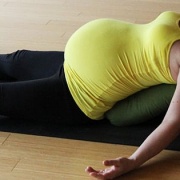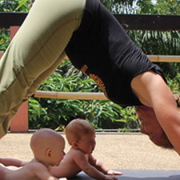 https://samahitaretreat.com/wp-content/uploads/2021/02/nauli-for-women.jpg
533
1000
Gill Breetzke
http://samahitaretreat.com/wp-content/uploads/2024/01/samahita-logo-v2.svg
Gill Breetzke2021-02-08 12:45:002022-11-29 04:35:14Nauli for Women
https://samahitaretreat.com/wp-content/uploads/2021/02/nauli-for-women.jpg
533
1000
Gill Breetzke
http://samahitaretreat.com/wp-content/uploads/2024/01/samahita-logo-v2.svg
Gill Breetzke2021-02-08 12:45:002022-11-29 04:35:14Nauli for Women5 Tips for Teaching Pregnant Women in a Yoga Class

Many pregnant women look to start a yoga practice during pregnancy, and although they should go to a Prenatal Yoga class, what happens when they show up to yours? Without the proper knowledge, it can be frightening to glance up at the group when your class is starting to see a woman with a baby on board. Too often, pregnant women are actually ignored in classes, or just told to “skip this one” because the teacher doesn’t know what to do. Here are 5 Tips to steer you in the right direction.
- Remember, she’s pregnant, not sick.
There is a fine line between coddling and caring. A Pregnant woman will like to have reassurance and be cared for during a class, however coddling her as if she was sick in bed with the world’s worst flu likely won’t turn her into a raving fan, nor will it do her much good to prepare her for the marathon of birth. Providing her with necessary props and modifications, as well as quick check-ins to ensure she’s comfortable will provide her enough support and you the feedback you need. - Encourage Rest.
Always encourage a pregnant woman to take a comfortable resting position when she needs it. This allows her to monitor her own energy levels and not overdue it. Often women experience dizziness with positional changes in the first trimester due to their pregnancy-induced decreased blood pressure. Adequate rest is built into a prenatal class, as is a long side-lying or inclined savasana. - Modify as needed.
 Deep closed twists are ill advised during any time in pregnancy and rather than have her sit and do nothing while the rest of the class breathes into Marichyasana C, show her how she can twist the opposite direction and stay comfortable and safe. Every day will be different for her in terms of what feels good so be sure to check in and give her modifications on the spot as needed.
Deep closed twists are ill advised during any time in pregnancy and rather than have her sit and do nothing while the rest of the class breathes into Marichyasana C, show her how she can twist the opposite direction and stay comfortable and safe. Every day will be different for her in terms of what feels good so be sure to check in and give her modifications on the spot as needed.
This modification of Baddhakonasana opens the pelvis, allows for a release or lift of the pelvic floor and opens the chest and diaphragm - Know the Do’s and Don’ts.
Did you know that it is advised that women no longer lay supine once they are past 14 weeks? This is because pressure could be exhibited on the inferior vena cava, which would restrict blood flow. This, like many other things are quite specific in terms of what a pregnant woman should and should not do during a yoga class to remain safe, feel good and reap the benefits of practicing. High-risk pregnancies require even more attention. - Get Educated.
There are many reasons why Prenatal Yoga Teacher Trainings exist. There is a lot to learn and understand about the physiology and biomechanics of the pregnancy journey. A good course will cover pre-pregnancy and post partum topics as well as focus on pregnancy-specific practices. Think about it like this: All athletes can benefit from increasing their strength and basic fitness level, however, specialized sport specific training will better prepare them for performance at the highest level, is required. This is the same for pregnant women. Participating in a yoga class will bring them great benefit, however, working with a prenatal yoga teacher will help prepare her mentally and physically for both childbirth and the postpartum months of early motherhood. Also, learning how to teach prenatal yoga makes you a better yoga teacher overall. In a prenatal course you’ll learn a variety of modifications that can also be used for beginners, in a restorative class or for students with injuries.
This barely scratches the surface. If you want to be confident teaching pregnant women in your classes or you’d like to start a prenatal program, you should check out my next prenatal course : “Prenatal and Postpartum Yoga Teacher Training” in beautiful Thailand.
More from the Samahita Blog




